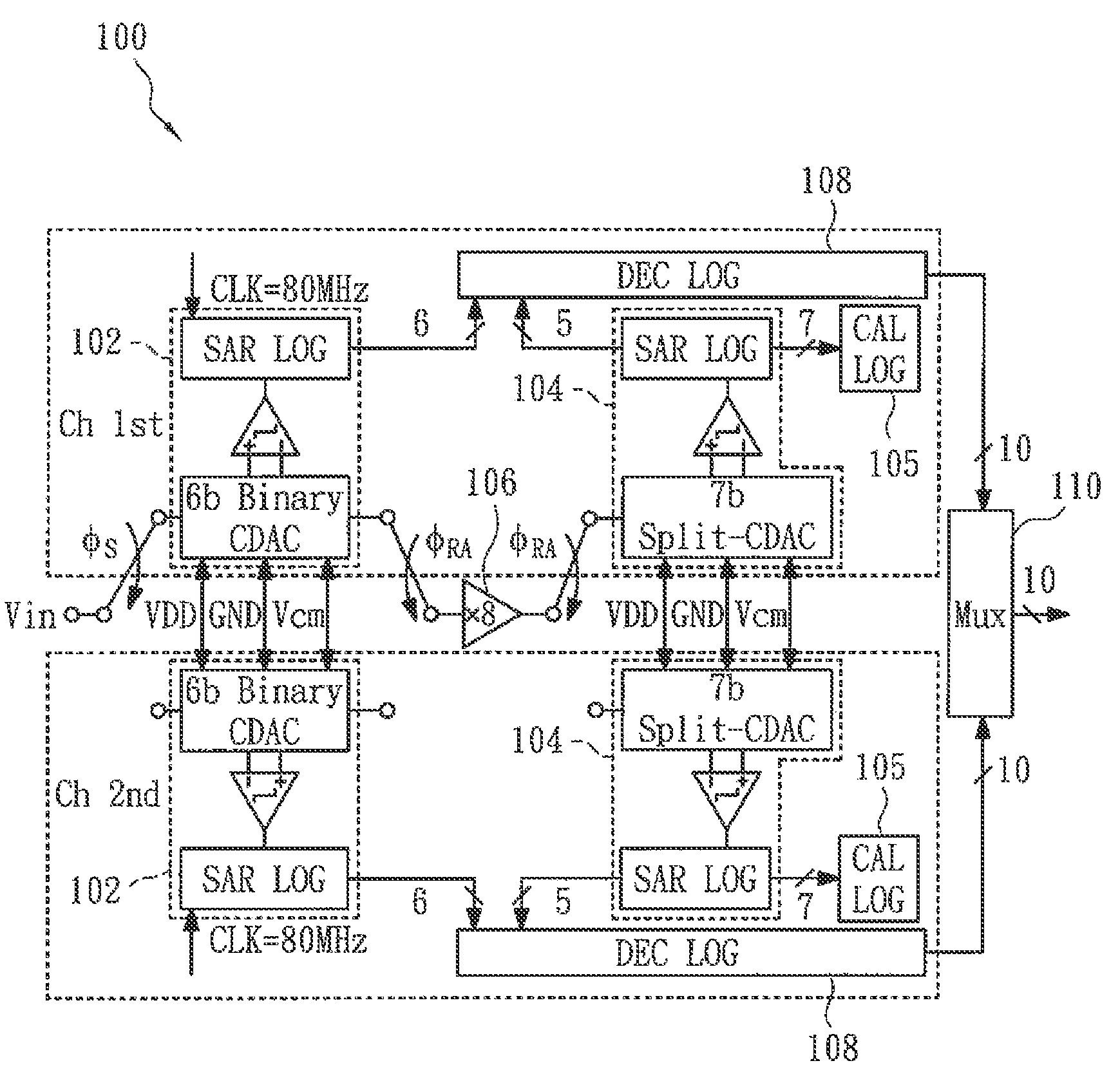Analog to digital converter circuit
a converter circuit and analog-to-digital converter technology, applied in analogue/digital conversion, transmission systems, instruments, etc., can solve the problems of flash adc being the fastest, having the highest implementation cost, and sar adc being considerably slower than flash adc, so as to improve the feedback factor
- Summary
- Abstract
- Description
- Claims
- Application Information
AI Technical Summary
Benefits of technology
Problems solved by technology
Method used
Image
Examples
Embodiment Construction
[0020]In the following description of preferred embodiments, reference is made to the accompanying drawings which form a part hereof, and in which it is shown by way of illustration specific embodiments in which the invention can be practiced. It is to be understood that other embodiments can be used and structural changes can be made without departing from the scope of the embodiments of this invention.
[0021]Reference is now made to FIG. 1. FIG. 1 is a block diagram of an analog to digital converter (ADC) according to an embodiment of the present invention. A time-interleaved successive approximation register (SAR) ADC circuit 100 with 10-bit resolution and 160 MS / s sampling rate is shown in FIG. 1. The ADC circuit 100 includes two interleaved pipelined-SAR ADCs. Each of the SAR ADCs comprises a first stage SAR sub-ADC 102, a second stage SAR sub-ADC 104, a residue amplifier 106 and a digital error correction logic 108. FIG. 2 is a timing diagram illustrating the time relationship ...
PUM
 Login to View More
Login to View More Abstract
Description
Claims
Application Information
 Login to View More
Login to View More - R&D
- Intellectual Property
- Life Sciences
- Materials
- Tech Scout
- Unparalleled Data Quality
- Higher Quality Content
- 60% Fewer Hallucinations
Browse by: Latest US Patents, China's latest patents, Technical Efficacy Thesaurus, Application Domain, Technology Topic, Popular Technical Reports.
© 2025 PatSnap. All rights reserved.Legal|Privacy policy|Modern Slavery Act Transparency Statement|Sitemap|About US| Contact US: help@patsnap.com



